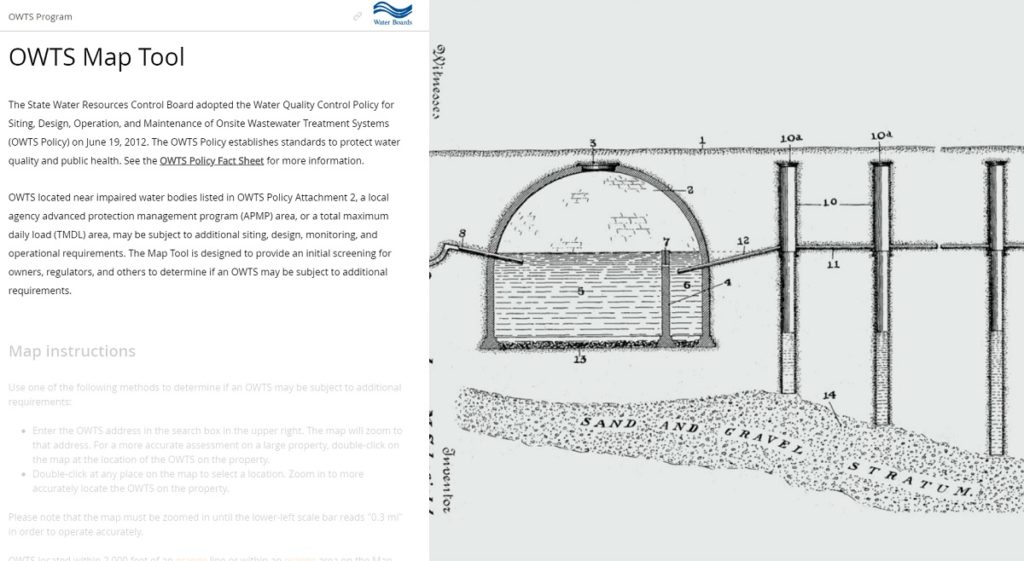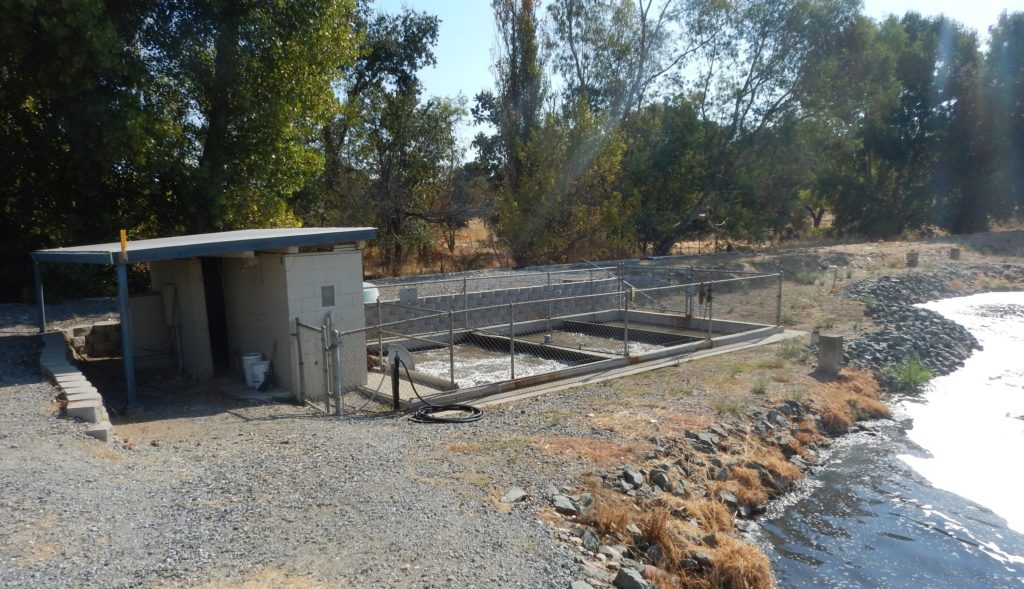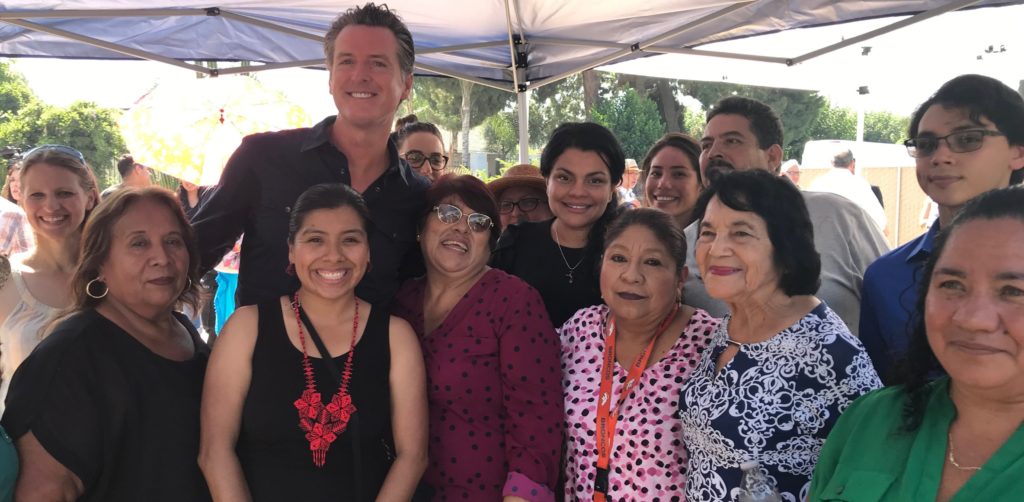
(l) Some disadvantaged communities may receive funding to build their own local package plant. (r) A town with a WRRF may receive funding to upgrade it to prepare for the additional flow.
SB 1215 was signed by Governor Brown in 2018 and requires the State Water Board to develop a program to assist disadvantaged communities with access to sewer service. The legislation authorizes them to also to provide funding for eligible projects.
“The act authorizes the State Water Board to facilitate consolidation between a state or a public agency, which could be a water district, a city, or a municipality, with a disadvantaged community where septic systems have failed or are threatening safe drinking water sources,” according to Dania Jimmerson, M.S., P.E., Program Specialist for the newly created Wastewater Consolidation Program.
Dania is a water resource control engineer with 15 years of experience with the Water Boards. If you know of a community, please contact her at the Central Valley Regional Water Quality Control Board at (916) 464-0449 or email [email protected].
Here’s an interview we recently conducted with Dania about the program.
What does SB 1215 require the State Board to do?
Water Board staff have been tasked to provide all of the necessary information to these communities and agencies to facilitate the extension of the sewer service to areas where septic systems are inadequate and as a result, provide wastewater treatment, which would be protective of water quality and drinking water resources.
As long as the disadvantaged community is within a three-mile radius and all the checklist items are met, then we can encourage or require the consolidation process.
In addition, the act requires the Water Boards to consult with all the entities, hold public meetings, and make sure designated funding is available and the entire process is very transparent.
As I mentioned earlier, our goal is to encourage voluntary consolidation by providing all the necessary information and guidance to the public through our public meetings and outreach. Mandatory required consolidation would be our last resource, where voluntary efforts have failed. We would like the process to be as cooperative and collaborative as possible.
The Central Valley Water Quality Control Board (Region 5) is the first Regional Board to begin implementation of the Wastewater Consolidation Program (Program). I am the first Water Resource Control Engineer to be hired as part of the Pilot Program. I have been with the Regional Board for about 15 years and have knowledge of the various permitting, funding, and administrative procedures involved in the consolidation process.
There is going to be a high level of coordination between the Division of Financial Assistance, Division of Water Quality, Division of Drinking Water, other state agencies, and stakeholders. Thus, future staff selected for this program must not only have a good understanding of wastewater treatment processes, but also be familiar with the State Water Board structure, laws, and regulations. I enjoy working on this project because it brings together numerous functions of the Water Boards to benefit many disadvantaged communities.

The State Water Boards OWTS program regulates septic tanks. The State provides a map for the public to see areas that may be subject to additional requirements to protect and clean-up impaired water bodies.
Are there many communities who may qualify and are within the three-mile radius?
The exact number of communities is unknown at this point. We are going to tap into existing resources and data already in place to identify these communities. One source, is data gathered under the Onsite Wastewater Treatment System (OWTS) Policy. Another data source are Local County Health Departments through implementation of their Local Area Management Plan (LAMP) Program.
The LAMP program defines what the counties need to do to manage existing and planned septic systems. Those two programs have identified many communities along Highway 99 in the Central Valley that have high concentrations of nitrate loading in groundwater.
There are at least 10 cities we have already identified using LAMPS and OWTS data. Within that area there are many more small communities we have to look at to see if they meet all the requirements for consolidation.
Why does the State Board believe this is needed now?
The Water Boards recognize that improperly operated and maintained septic tanks are a key source of bacterial, and nitrate contamination of surface and groundwater drinking water sources. Implementation of the OWTS Policy and LAMP Programs have laid the groundwork for what we are doing now by identifying areas with septic tanks that are potential sources of bacterial and nitrate contamination of drinking water sources.
We believe this program is needed now to identify and assist those communities where failing septic systems have impaired water quality and threatened access to safe and affordable drinking water.
It is responsibility of the Local County Health Departments to regulate the septic systems, and required their replacement, as necessary.
That’s where this new program comes in, because SB 1215 provides the funding to fix what the counties and the OWTS policy have already identified as the source of the problem.
How many systems do you estimate State Water Board staff can work on each year?
It’s hard to say this early in the Program how many communities or consolidations we can reach per year. That is why we are reaching out to cities and municipalities to introduce the Program.
We don’t have an exact number because there are so many factors beyond our control. One example is the consolidation process itself can take easily up to a year or more depending on zoning or other local issues. The review and approval by the Division of Financial Assistance (DFA) could take between three to six months. There is also the permitting for adding connections to an existing wastewater treatment system or building new systems.
We have already identified several focused areas in the Central Valley. We hope to find a handful of pilot cases in these areas that would be good examples for us to start working on.
It’s important to mention that the State Water Board’s Division of Drinking Water has already been implementing drinking water consolidation for disadvantaged communities for a couple years, using new mandatory consolidation rules for drinking water systems. Their consolidation process will provide a model for what we are doing in this Program.
Based on their experience and the knowledge we derive early in this Program, we’re developing a procedure that is going to be used across the State by other regions and the communities.
We anticipate reaching a number of communities next year. It all depends on the interest and cooperation on what the number is going to be.

Small communities might be able to receive funding via SB 1215 to design and build their own package wastewater treatment plant.
So the town council or the County will sign an agreement with the state to participate?
There is a process set up in SB 1215, and it’s very structured. The steps include:
The first aspect is public notice. The act requires the Regional Board staff to provide a least 30-day notice of the meeting to the affected residents and all affected local government agencies and the sewer service providers.
The main purpose of the public meeting is to meet all of the representatives for the affected areas and provide an opportunity to present details of the program and to solicit public comment.
Usually, the meetings will be conducted around in the evening time and the location of the disadvantaged communities to accommodate people’s work schedules and area of residency.
The last aspect is the negotiation timeframe. The act provides a reasonable deadline that is no less than six months for the potential receiving water sewer system and the affected property owners to negotiate the annexation, extension of the service, or other means for providing sewage service.
How much funding does SB 1215 provide for these projects?
In terms of resources, SB 1215 can fund up to $75,000 per household towards the project. The funding amount is of course evaluated by DFA on a case-by-case basis. But that’s the maximum per household.
The other available funding is up to $8 million per facility to expand a current wastewater treatment plant so it can receive more flow, or to install a new wastewater treatment plant for the community. Perhaps some communities just need a small package plant in their neighborhood. These days there are some very compact wastewater treatment facilities.

Governor Newsom at the signing ceremony in 2019 for the Safe and Affordable Drinking Water Fund (SB 200).
Will there be a program to help communities with the cost of O&M?
The community will need well trained and certified operators. Ideally these operators will be located within the same communities. Unfortunately, SB 1215 does not have the mechanism or funding available to train or certify operators.
We are investigating the possibility of requesting funding through the Safe and Affordable Drinking Water program or other state programs.
Is there a mandatory component to the program?
Water Board staff are going to place maximum effort to facilitate voluntary consolidation. But yes, ultimately, if there’s no agreement and the negotiation time frame passes, there might be some enforcement action taken to require consolidation. We would then work with the sewer system facilities, the communities, and service providers to help facilitate the necessary connections.
Does the State Board envision working with NGOs or community groups on consolidation projects?
We have started to put together an interested parties list. Within that list we have a core group that includes several State Water Board Divisions (e.g. DDW, DWQ, DFA, etc.), Regional Boards, and other stakeholders including the NGOs, wastewater utility groups, and other groups helping us with outreach strategies and their local experience.
We are hoping that during the CWEA conference (April 2020) we will meet wastewater agencies and other groups that will help us promote the program.
The Wastewater Consolidation Program is new and there are many people that don’t know about the Program yet. Thus, the list of interested parties is hopefully going to expand as we start promoting the Program.
What type of assistance is provided to the wastewater utility receiving the new wastewater flows?
There is going to be funding for expansion and upgrades of existing receiving systems and wastewater treatment facilities. Another example would be a wastewater treatment facility that currently has compliance problems, but there is no funding. Now they have access to SB 1215 funding to help them, as long as there is a disadvantaged community nearby, which will benefit from sewer services. That’s going to be an advantage now.
For example, I know of one small public wastewater treatment facility and they are having E. Coli compliance issues. Since they are close enough to a disadvantaged community that could potentially benefit from receiving sewer services, Water Board staff through the implementation of SB 1215 can help coordinate funding and resources.
Ultimately, SB 1215 will not only meet the goal of improving water quality for individual communities, it will also help receiving water systems make the necessary upgrades to meet compliance requirements.
Therefore, two problems could be solved in one step.
Once the system is built and treatment plant improved – how do the local communities pay for ongoing O&M?
There’s going to be funding for the initial connection of the households, but it’s up to the communities to pay their respective share for the sewer system after that. On the other hand, these connections will hopefully improve property values.
Anything else to share about the SB 1215 sewer consolidation program?
Our first step is to finish the hiring process for Water Board team members. We also have a lot of GIS mapping and data evaluation that needs to be completed.
As all of this is happening, the legislation requires us to develop a Statewide policy handbook.
Since Region 5 is piloting implementation of the Program, the policy handbook is expected to be completed by next fiscal year. The policy handbook will provide procedures, not just for Water Boards’ staff, but also for communities in the consolidation process. It will outline how the service providers can apply for funding. It is our intention to make the overall process streamlined.
And the third step is we need to start planning our first stakeholder meeting, so anyone interested in joining and contributing ideas, is very much welcome at this point.
Communities or people that know who might already be in need of sewer consolidation, are encouraged to contact us. We would be happy to provide you with the necessary information.